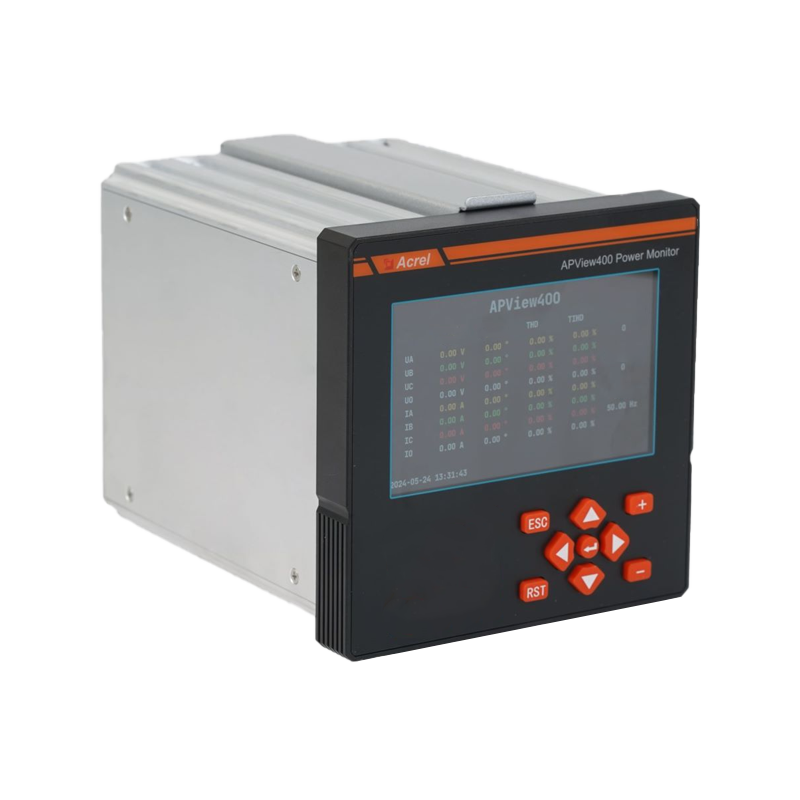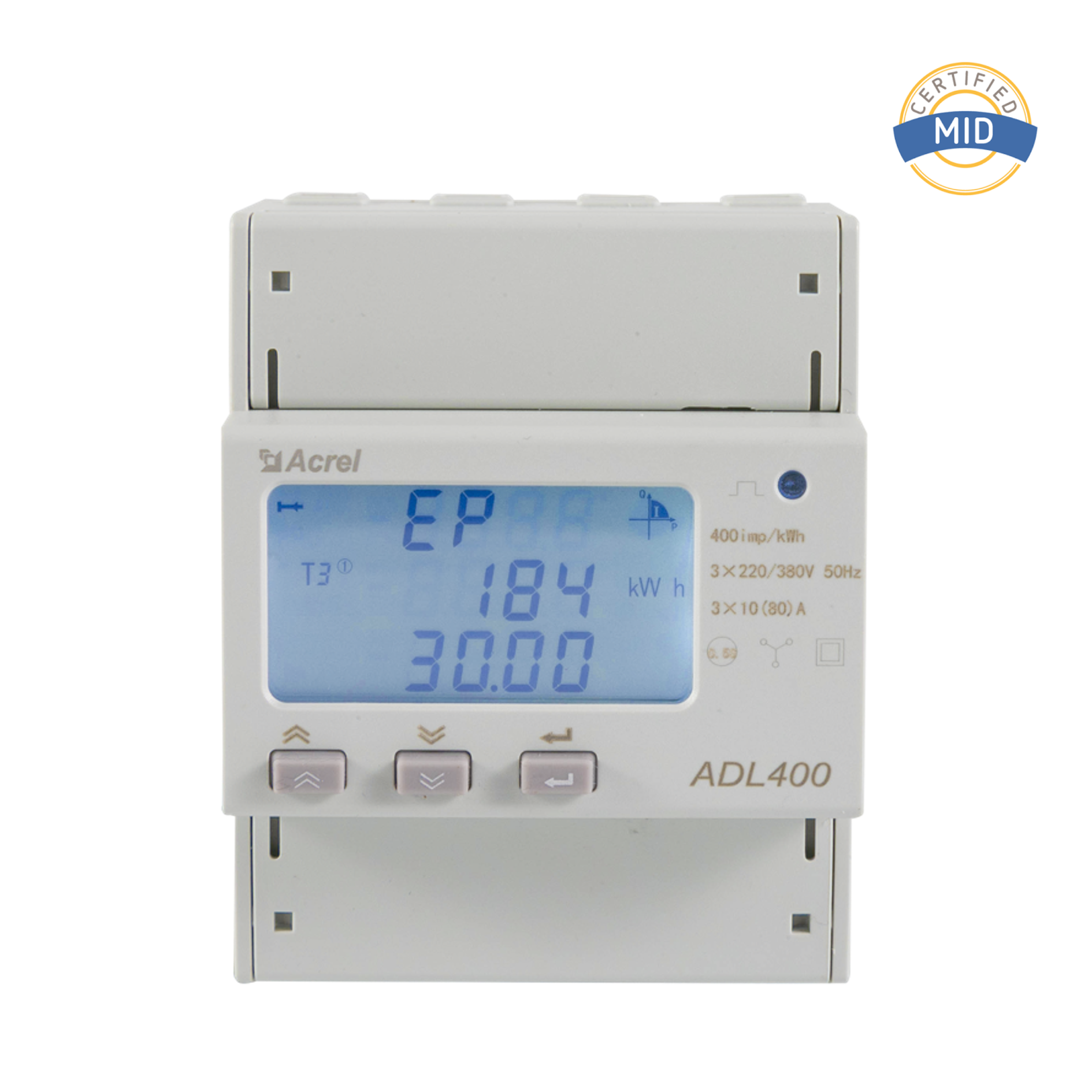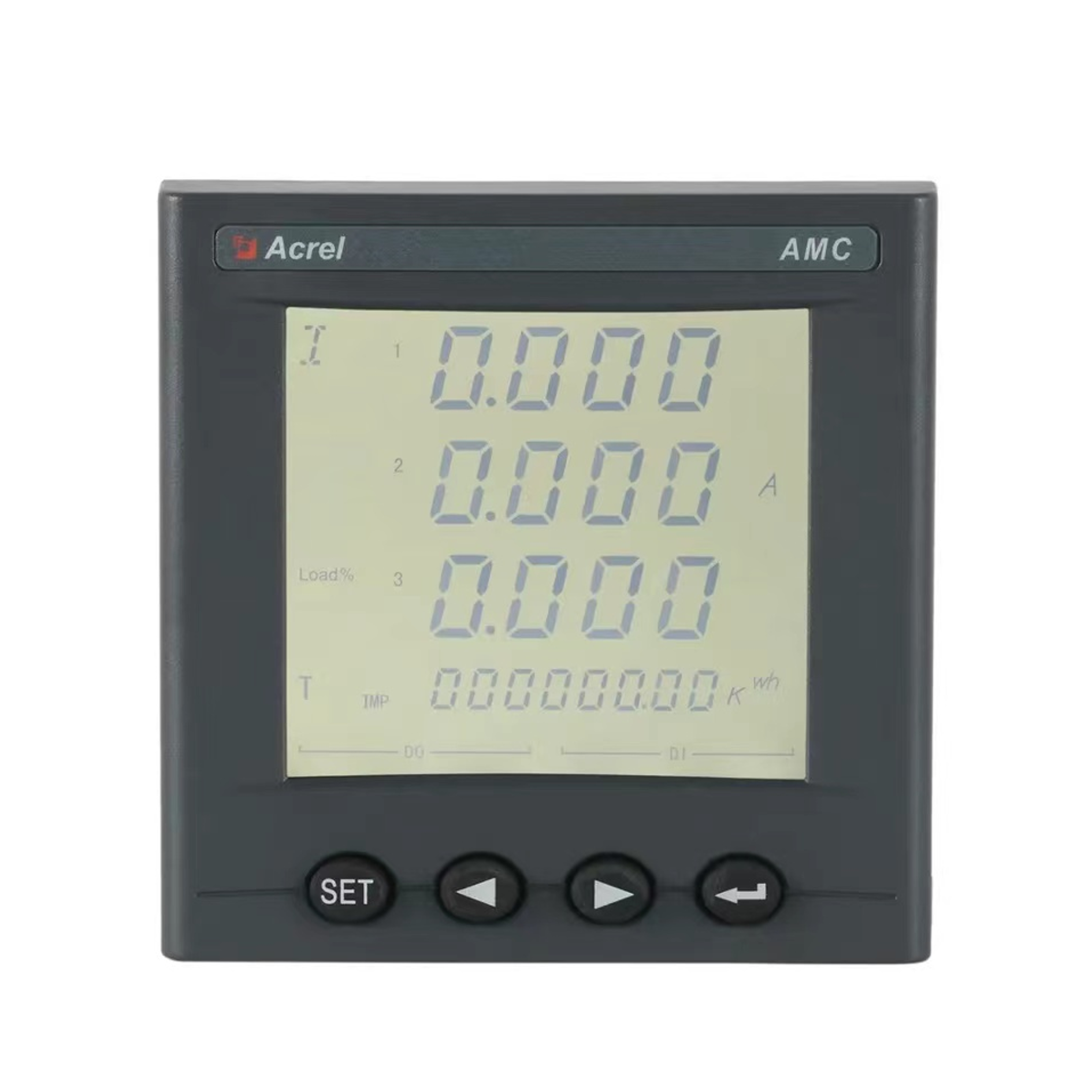Single-Phase vs. Three-Phase: Which Multi-Circuit Meter is Right for Your Application?
The accurate measurement and management of electrical energy are fundamental to the operational and financial efficiency of modern commercial, industrial, and multi-tenant residential buildings. A multi-circuit energy meter has emerged as an indispensable tool for this purpose, providing a centralized solution for monitoring multiple individual circuits from a single device. However, a critical decision point at the outset of any project is determining the correct electrical configuration: single-phase or three-phase. This choice is not a matter of one being universally superior to the other, but rather of selecting the right tool for the specific electrical load and application at hand.
Understanding the Core Technology: What is a Multi-Circuit Energy Meter?
Before delving into the differences between single-phase and three-phase systems, it is essential to establish a clear understanding of the core device in question. A multi-circuit energy meter is a specialized piece of electrical equipment designed to measure the energy consumption of multiple circuits simultaneously. Unlike a traditional whole-building utility meter, or a collection of individual single-circuit meters, this device consolidates monitoring functions into a single unit. It typically consists of a central processing unit and display, which is connected to multiple current transformers (CTs) or sensors that are clamped around the conductors of each circuit to be monitored.
The primary function of this system is to provide granular, circuit-level data on energy usage. This capability is the foundation for advanced energy management systems, enabling facility managers, building owners, and utilities to gain deep insights into how, when, and where electricity is consumed. Key data points often include kWh (kilowatt-hours) consumption, real-time and historical power (kW), current (A), voltage (V), and, in more advanced models, power quality parameters. The operational principle of a multi-circuit energy meter is to sample data from each connected CT, process it, and present an aggregated and individual breakdown of consumption. This makes it an ideal tool for applications ranging from cost allocation in tenant billing to load profiling for preventative maintenance and submetering for sustainability reporting. The choice between a single-phase and three-phase meter fundamentally affects the types of circuits and loads this system can effectively monitor.
Fundamental Principles: Single-Phase and Three-Phase Power Systems Explained
Single-Phase Power is a two-wire AC power circuit. It consists of one phase conductor (often called “hot” or “live”) and one neutral conductor. The voltage in a single-phase system oscillates in a single sinusoidal waveform. In many regions, the standard voltage for single-phase power is 120V or 230V, between the phase and neutral. This type of power is sufficient for most smaller loads and is the standard supplied to residential homes and small businesses. It is used to power lighting, outlets, and appliances like computers, televisions, and refrigerators. The primary limitation of single-phase power is that it is less efficient for transmitting power over long distances and is not suitable for starting and running larger industrial motors smoothly without additional components.
Three-Phase Power is a three-wire AC power circuit with each phase set 120 electrical degrees apart. It uses three phase conductors and, in many configurations, a neutral conductor. The power in a three-phase system is constant, as the sum of the power in all three phases remains steady, unlike the pulsating nature of single-phase power. Common voltage configurations include 208V/120V or 480V/277V (line-to-line voltage / line-to-neutral voltage). This configuration offers two significant advantages: power density and efficiency. For the same current-carrying capacity of the conductors, a three-phase system can deliver nearly 1.73 times (√3) more power than a single-phase system. Furthermore, three-phase motors are inherently self-starting, simpler in design, and operate more smoothly and efficiently than their single-phase counterparts. This makes three-phase power the standard for industrial applications, data centers, large commercial buildings, and any facility with substantial motor loads.
Detailed Comparison: Single-Phase vs. Three-Phase Multi-Circuit Meters
The design of a multi-circuit energy meter is intrinsically linked to the type of power system it is intended to monitor. The choice dictates the meter’s internal architecture, its wiring requirements, and the scope of its application.
A single-phase multi-circuit energy meter is designed to monitor multiple individual single-phase circuits. Each input channel on the meter is configured to connect to a single current transformer on a single-phase circuit. For instance, a 24-circuit single-phase meter can monitor 24 separate, independent single-phase branch circuits. These circuits could be lighting banks, standard outlet receptacles, or individual small appliance loads within a larger building. The meter measures the current and voltage for each of these single-phase circuits independently.
In contrast, a three-phase multi-circuit energy meter is engineered to monitor multiple three-phase circuits. Here, a single “circuit” as recognized by the meter comprises three or four current transformers—one for each phase conductor and sometimes one for the neutral. Therefore, a 12-circuit three-phase meter would typically require 12 sets of CTs (36 or 48 individual CTs in total) to monitor 12 separate three-phase loads, such as HVAC units, industrial machinery, or large water pumps.
The following table summarizes the key distinctions:
| Feature | Single-Phase Multi-Circuit Meter | Three-Phase Multi-Circuit Meter |
|---|---|---|
| Core Function | Monitors multiple independent single-phase circuits. | Monitors multiple independent three-phase circuits. |
| Typical Circuit Count | Higher number of individual circuit channels (e.g., 24, 36, 48). | Lower number of grouped circuit channels (e.g., 4, 8, 12). |
| Wiring per Circuit | One current transformer (CT) per circuit channel. | Three or four CTs per circuit channel (one per phase, plus neutral). |
| Measured Parameters | Per circuit: Current, Voltage (L-N), Power, Energy (kWh). | Per circuit: Current, Voltage (L-L & L-N), Power per phase and total, Energy (kWh), Power Factor per phase. |
| Load Type | Smaller, distributed loads (lighting, outlets). | Larger, centralized motor-driven or balanced loads (HVAC, machinery). |
| Data Complexity | Simpler, aggregated per circuit. | More complex, allowing for phase imbalance analysis. |
A critical point of convergence is that many modern three-phase multi-circuit energy meters are capable of monitoring a mix of three-phase and single-phase circuits. This hybrid capability offers tremendous flexibility. For example, in a commercial building, the same meter could be used to monitor several three-phase air handling units while also monitoring single-phase lighting circuits on each floor. This reduces the need for multiple separate metering devices and simplifies the overall submetering architecture.
Application Scenarios: Matching the Meter to the Environment
The selection between a single-phase and three-phase multi-circuit energy meter is predominantly dictated by the electrical infrastructure and the nature of the loads present in the application environment.
Ideal Applications for Single-Phase Multi-Circuit Meters
The primary strength of a single-phase multi-circuit energy meter lies in its ability to provide granular oversight over a large number of small, discrete loads. Its applications are characterized by the need for cost allocation and detailed usage breakdowns across many individual points.
Multi-Tenant Residential Buildings (MTRs) and apartment complexes are a classic use case. Here, a single-phase meter installed at the panel level can separately track the energy consumption of each apartment’s lighting, general outlets, and appliances. This data is crucial for tenant billing, ensuring that residents pay only for the electricity they actually use, which is a fundamental aspect of residential submetering. Similarly, in office buildings, a single-phase meter can be used to monitor power consumption of individual tenant spaces, conference rooms, and common area lighting, providing the data needed for commercial submetering and lease-based utility charges.
Retail Spaces and shopping malls also benefit greatly. A single-phase meter can monitor the energy use of each retail unit, allowing mall management to accurately bill tenants. Furthermore, within a single store, it can be used to track the consumption of lighting, signage, and point-of-sale systems. The high channel count of single-phase meters makes them ideal for these distributed, low-power density environments where the primary goal is administrative accountability and fair cost distribution.
Ideal Applications for Three-Phase Multi-Circuit Meters
Three-phase multi-circuit energy meters are deployed in environments where the electrical loads are substantial and inherently three-phase. The focus here is often on operational efficiency, equipment monitoring, and load management rather than just cost allocation.
Industrial Facilities and manufacturing plants are the most straightforward application. The majority of machinery—including CNC machines, large compressors, conveyor systems, and industrial pumps—runs on three-phase power. A three-phase meter allows facility managers to monitor the energy consumption of each major machine or production line. This enables load profiling to identify inefficient equipment, schedule operations to avoid peak demand charges, and conduct preventative maintenance by spotting abnormal consumption patterns that may indicate a motor is beginning to fail.
Large Commercial Buildings and data centers rely heavily on three-phase power for their core systems. Central HVAC systems, which include chillers, cooling towers, and air handling units, are almost exclusively three-phase. A three-phase multi-circuit energy meter is essential for monitoring these energy-intensive systems. In data centers, it is used to track the power drawn by racks of IT servers and the supporting cooling infrastructure. The ability to measure parameters like power factor and phase imbalance is critical in these settings, as imbalances can indicate wiring problems or uneven load distribution, leading to inefficiencies and potential equipment damage.
Critical and Specialized Applications also depend on three-phase metering. Medical facilities use them to monitor surgical wing power panels, while laboratories track consumption of specialized environmental control equipment. The comprehensive data provided is vital for ensuring system reliability and optimizing energy use in mission-critical environments.
Key Selection Criteria: A Guided Decision-Matrix for Buyers
Selecting the correct multi-circuit energy meter requires a systematic evaluation of the electrical system and project objectives. The following criteria form a logical decision matrix.
1. Analyze the Existing Electrical Infrastructure and Load Types. This is the most critical first step. You must answer a fundamental question: What types of loads need to be monitored?
* If the circuits to be monitored are exclusively or predominantly single-phase loads (e.g., lighting, receptacles), then a single-phase multi-circuit energy meter is the logical and cost-effective choice.
* If the circuits include three-phase loads (e.g., motors, large HVAC, industrial ovens), then a three-phase meter is mandatory. Furthermore, if the project involves a mix of both, you should prioritize a three-phase meter with the flexibility to also monitor single-phase circuits.
2. Determine the Primary Objective of Metering. Understanding the “why” behind the installation will guide the “what”.
* For tenant billing and cost allocation in environments with many small, similar loads, the high channel count of a single-phase meter is typically the best fit.
* For equipment performance monitoring, preventative maintenance, and demand control of large machinery, the detailed per-phase data from a three-phase meter is indispensable. The ability to detect phase imbalance can prevent costly motor burnouts and improve overall system efficiency.
3. Evaluate Data and Communication Requirements. The value of a multi-circuit energy meter is realized through the data it provides. Consider what data is needed and how it will be accessed.
* Both single-phase and three-phase meters offer a range of communication options, including Modbus RTU, Modbus TCP/IP, and BACnet MS/TP. These are standard communication protocols for integration into building management systems (BMS).
* Three-phase meters typically provide a richer dataset, including individual phase voltages, currents, power factors, and cumulative data. If your energy management strategy requires analyzing power quality or balancing loads across phases, this detailed data is a necessity.
4. Consider Installation and Scalability. The physical installation and future expansion plans are practical considerations.
* Installing a multi-circuit energy meter requires connecting all relevant current transformers. A three-phase meter installation is inherently more complex due to the higher number of CTs per circuit. Proper wiring and labeling are crucial.
* Consider future needs. If a building currently has mostly single-phase loads but plans to add three-phase equipment in the future, investing in a flexible three-phase meter from the outset may be more prudent than installing two separate systems later.
-
The "Stethoscope" of Power Systems: Why You Need a Power Quality Analyzer
 Part 1: Introduction 1.1 What is Power Quality and Why is it Important? In modern society, a stable ...View More
Part 1: Introduction 1.1 What is Power Quality and Why is it Important? In modern society, a stable ...View More -
Advancements and Applications of AC Energy Meters in Modern Power Management
 Introduction to AC Energy Meters In today’s rapidly evolving energy sector, accurate measurement and...View More
Introduction to AC Energy Meters In today’s rapidly evolving energy sector, accurate measurement and...View More -
What are the key differences between a basic thermal overload relay and a smart motor protection relay?
 I. Introduction: The Critical Need for Motor Protection Electric motors are the undisputed workhorse...View More
I. Introduction: The Critical Need for Motor Protection Electric motors are the undisputed workhorse...View More -
Precision and Versatility: Unlocking Efficiency with Panel Mount Multifunction Meters
 Introduction In modern industrial and commercial power environments, precise measurement and managem...View More
Introduction In modern industrial and commercial power environments, precise measurement and managem...View More
 Email: [email protected]
Email: [email protected] Phone: +86-18702106858 / +86-21-69156352
Phone: +86-18702106858 / +86-21-69156352


 English
English Deutsch
Deutsch





